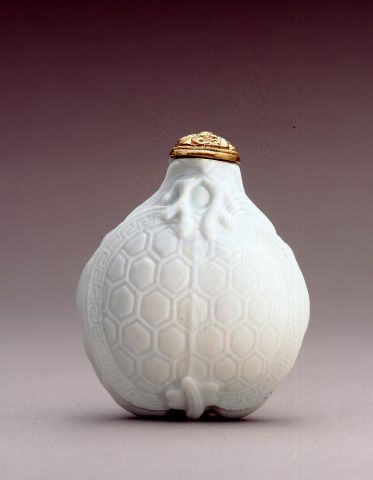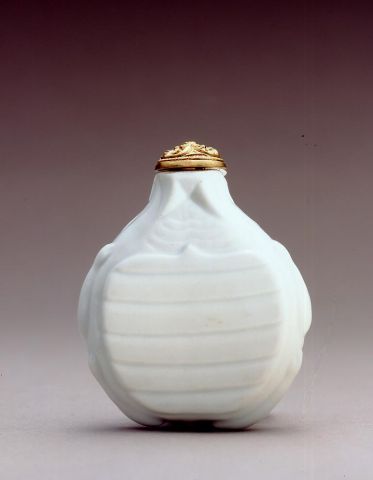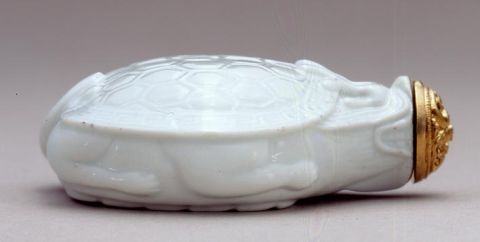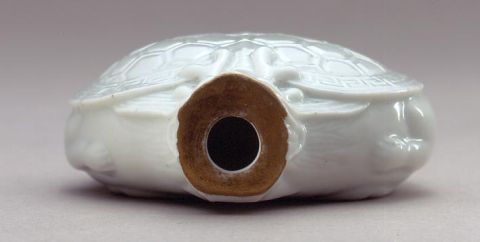



Bottle ID: 470
MOLDED WHITE GLAZED TORTOISE
Date: 1770-1830
Height: 51 mm
Porcelain covered overall with a colorless glaze with gold enamel, molded in the form of a bixi, a mythological dragon-tortoise, with the head and tail of a dragon and the body of a tortoise, the mouth with traces of gilding.
Probably Imperial, attributed to the Jingde Zhen Imperial kilns.
Similar Examples:
Crane Collection nos. 298, 375, 452, and 461
Moss, Hugh, Victor Graham and Ka Bo Tsang. A Treasury of Chinese Snuff Bottles - The Mary and George Bloch Collection, 1995, Vol I, pp. 130-131, no 51.
Christie's, New York, September 19, 2007, lot 603, The Meriem Collection.
Chinese Snuff Bottles: Catalogue of an exhibition, Hong Kong Museum of Art, 15 Oct. - 26 Nov. 1997, p. 50, no. 87.
Provenance:
Hugh Moss (HK) Ltd.
Vanessa Holden, New York, October 2001
The bixi or toulong is a mythical beast made up of component parts of different animals - the head of a dragon, the tail of a qilin, the feet of a Buddhist lion and the body of a tortoise. The majority of "dragon-tortoise" bottles were produced in nephrite, or more rarely in amber, as were most animal-form bottles. Technically a mythical beast, it would nevertheless fit into this group as would Liu Hai's three legged jade toads, and the porcelain Buddhist lions. The series of nephrite bixi are well known, but rare and are almost always of very high quality as is this bottle with its very pure glaze and fine detailing. This example in porcelain is unique, and perhaps inspired by the jade group which appears to be dated to the eighteenth century rather than to the early nineteenth century. The bixi was one of the earliest and most powerful spiritual symbols of China. Its domed carapace represented the heavens, whilst the flat under-shell symbolized the earth, with the soft flesh between being symbolic of mankind. The bixi was also associated with longevity as it lived for many years and apparently without food, water or even, air.

 English
English 中文
中文